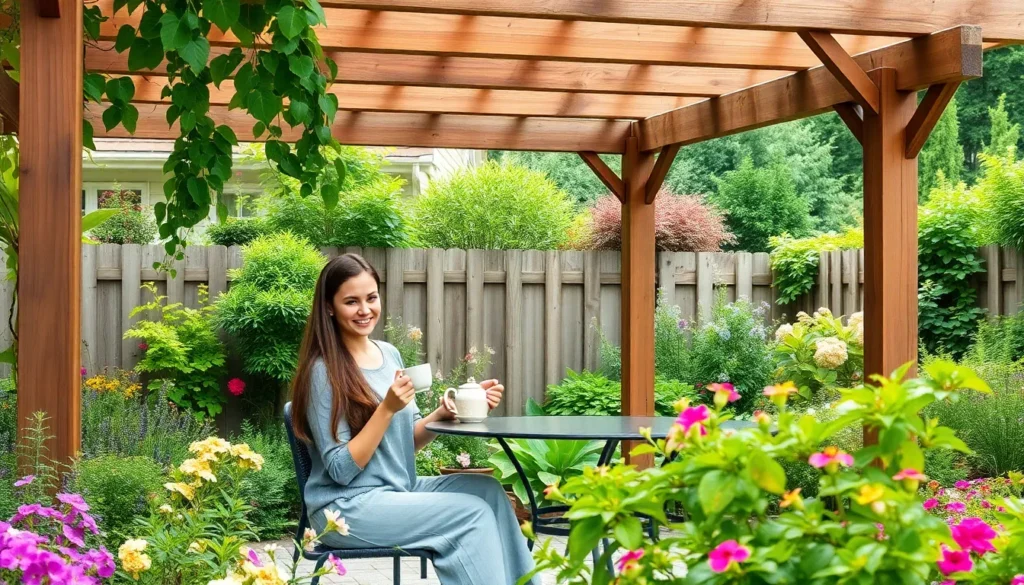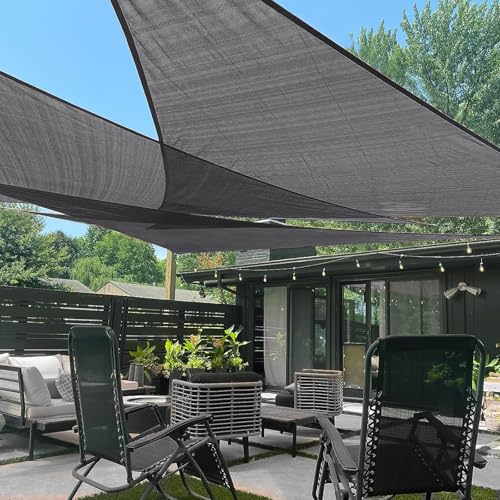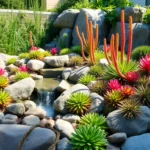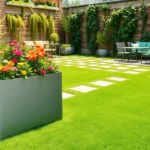When we step outside to enjoy our gardens we often find ourselves at the mercy of unpredictable weather. Whether it’s blazing sun scorching heat or unexpected rain showers the elements can quickly turn our outdoor sanctuary into an uncomfortable space. That’s where smart garden shelter answers come to the rescue.
Creating the perfect garden shelter isn’t just about protection – it’s about extending our outdoor living season and maximizing every square foot of our precious garden space. From simple DIY canopies to elegant pergolas and multi-functional garden rooms we’ve discovered countless ways to shield ourselves while maintaining that connection to nature we crave.
The best garden shelters combine functionality with style transforming ordinary outdoor spaces into year-round retreats. We’ll explore innovative shelter ideas that work for every budget garden size and aesthetic preference helping you create your own weather-resistant outdoor oasis.
Pergola Paradise: Creating Elegant Overhead Coverage
Pergolas offer the perfect balance between open air freedom and protective shelter coverage. We’ll explore various pergola construction options and enhancement techniques to create your ideal outdoor sanctuary.
Wooden Pergola Construction Tips
Planning your wooden pergola layout requires careful consideration of your garden’s dimensions and sun patterns. We recommend measuring the intended area and marking post locations with spray paint before breaking ground. Cedar and redwood materials provide natural weather resistance and can last 15-20 years with proper maintenance.
Foundation preparation involves digging post holes 2-3 feet deep for structures over 8 feet tall. We suggest using concrete footings for permanent installations or galvanized steel anchors for removable designs. Pressure treated lumber works well for ground contact posts while reducing rot and insect damage.
Assembly techniques focus on creating sturdy joints using galvanized carriage bolts and metal brackets. We prefer notched beam connections over simple overlaps as they distribute weight more effectively. Pre drilling all holes prevents wood splitting and ensures clean professional looking results.
Finishing touches include applying wood stain or sealant every 2-3 years to maintain appearance and structural integrity. We recommend testing stain colors on scrap pieces first to achieve your desired aesthetic match with existing garden features.
Vinyl and Metal Pergola Options
Vinyl pergola systems offer maintenance free alternatives to traditional wood construction. We’ve found these structures resist fading cracking and warping while requiring only occasional cleaning with soap and water. Most vinyl pergolas come in white beige and gray color options with 10-20 year manufacturer warranties.
Aluminum pergola frames provide lightweight yet durable construction suitable for various weather conditions. We appreciate how powder coated finishes resist rust and corrosion while offering color choices like bronze black and white. These materials typically cost 20-30% more than wood but eliminate ongoing maintenance expenses.
Steel pergola designs deliver maximum strength for larger spans and heavy loads from climbing plants or hanging accessories. We recommend galvanized or stainless steel options in coastal areas where salt air accelerates corrosion. Welded joints create seamless appearances while bolted connections allow for easier assembly and potential relocation.
Hybrid construction approaches combine metal frames with wood or composite slats for aesthetic appeal. We’ve seen successful projects using steel posts with cedar crossbeams or aluminum structures featuring bamboo screening panels for unique visual interest.
Adding Climbing Plants for Natural Shade
Fast growing vine selections include clematis grapes and honeysuckle which can cover pergola structures within 2-3 growing seasons. We suggest choosing varieties suited to your hardiness zone and sun exposure levels for optimal growth and coverage density.
Training techniques involve guiding young vines along pergola beams using soft ties or plant clips. We recommend spacing guide wires 12-18 inches apart on vertical posts to support heavier vines like wisteria or climbing roses. Regular pruning maintains desired coverage while preventing structural overload.
Seasonal considerations affect plant selection and maintenance schedules throughout the year. We prefer deciduous vines for areas requiring winter sun penetration while evergreen options like ivy provide year round privacy and wind protection.
Maintenance requirements include annual pruning watering during dry periods and pest monitoring for healthy plant development. We suggest installing drip irrigation systems for consistent moisture delivery and applying organic mulch around root zones to retain soil moisture and suppress weeds.
Gazebo Glory: Establishing a Dedicated Garden Retreat
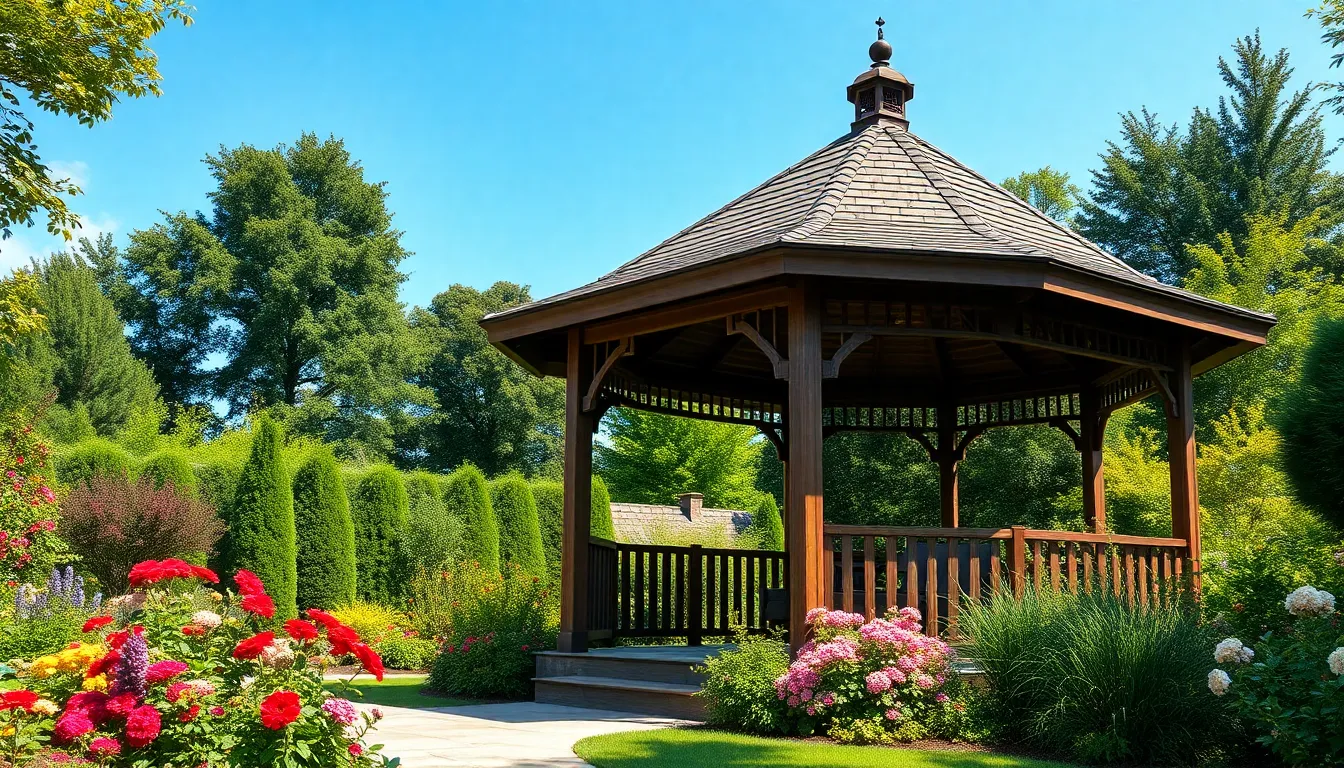
Gazebos represent the pinnacle of garden shelter elegance, offering dedicated spaces that transform ordinary yards into extraordinary outdoor sanctuaries. These freestanding structures create permanent focal points while delivering reliable weather protection year round.
Traditional Wooden Gazebos
Wooden gazebos bring timeless charm to garden spaces with their classic octagonal designs and pitched roofing systems. Crafted materials like cedar, pine, or pressure treated lumber ensure decades of reliable service when properly maintained. These structures typically feature intricate carvings and ornate details that make them stunning centerpieces for any outdoor setting.
Installation requires careful foundation preparation, though many homeowners find the process manageable with basic construction skills. Popular sizes range from 8 feet to 16 feet in diameter, accommodating everything from intimate seating areas to full dining configurations. Maintenance involves annual staining or sealing to protect against moisture damage and UV exposure.
Design flexibility allows for countless customization options, including built in benches, decorative railings, and integrated lighting systems. Weather resistance improves significantly when you choose naturally rot resistant woods or apply quality protective finishes regularly.
Modern Metal and Glass Structures
Metal frame gazebos with glass or polycarbonate roofing deliver contemporary aesthetics while maximizing natural light transmission. Aluminum and steel construction provides exceptional durability with minimal maintenance requirements compared to traditional wooden alternatives. These sleek designs complement modern landscaping themes perfectly while offering superior weather protection.
Glass panels create bright, airy spaces that feel connected to the surrounding garden environment. Polycarbonate alternatives provide similar light benefits with enhanced impact resistance and lower costs. Both materials allow year round enjoyment of outdoor spaces regardless of weather conditions.
Installation typically requires professional assembly due to precise measurements and structural considerations. Ventilation systems often integrate seamlessly into modern designs, preventing condensation buildup during temperature fluctuations. Powder coated finishes resist corrosion and fading for long lasting beauty.
Portable Pop-Up Gazebo Answers
Portable gazebos offer instant shelter answers for temporary events and seasonal garden activities. Lightweight aluminum frames and waterproof fabric canopies make setup and breakdown remarkably simple for most users. These versatile structures store compactly when not in use, making them perfect for smaller gardens or rental properties.
Setup times typically range from 15 to 30 minutes depending on size and complexity. Quality models feature reinforced joints and heavy duty fabrics that withstand moderate wind conditions effectively. Popular sizes include 10×10 feet and 12×12 feet configurations suitable for various gathering sizes.
Seasonal storage extends product lifespan significantly when shelters remain clean and completely dry before packing. UV resistant fabrics prevent fading and material degradation during extended outdoor exposure. Many models include sidewall attachments for enhanced privacy and weather protection during unexpected storms.
Arbor Ambiance: Building Charming Entryways and Passages
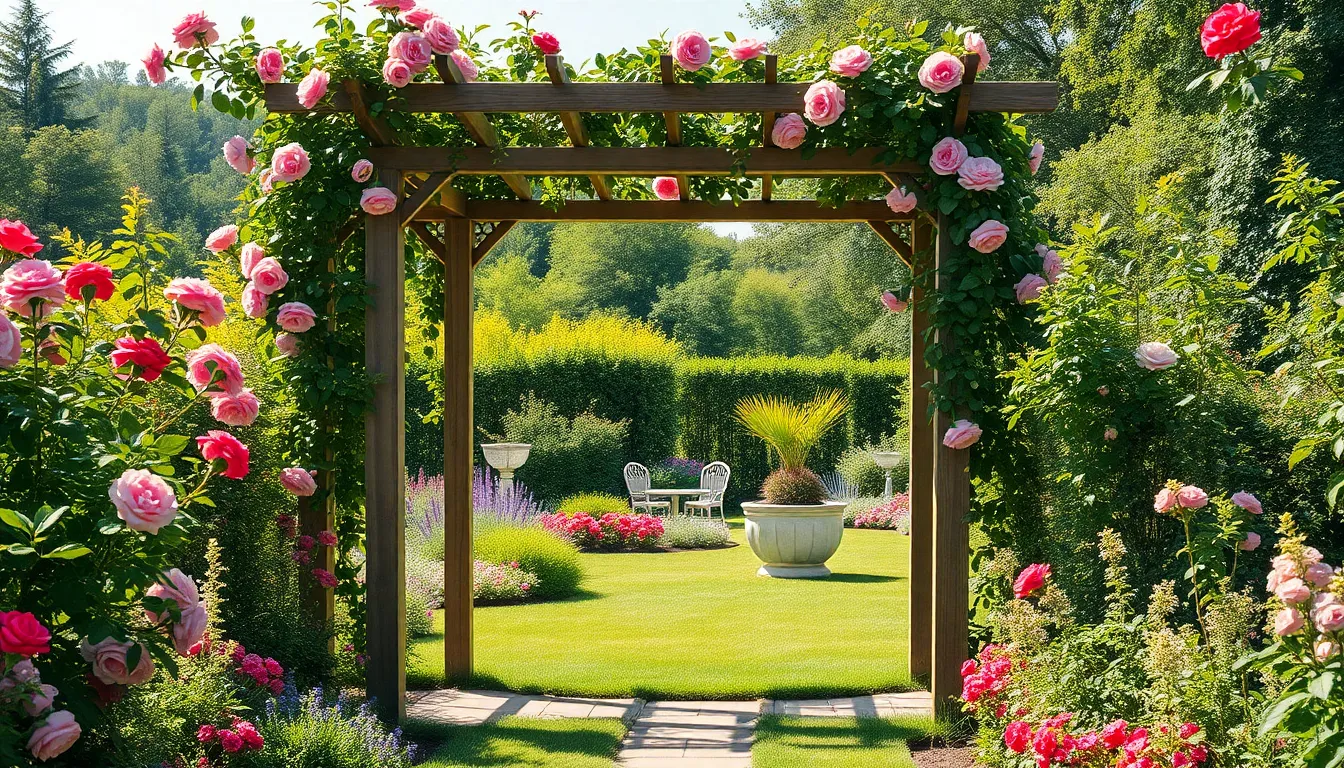
Arbors create magical transitions in our outdoor spaces while providing functional shelter answers. These versatile structures frame walkways beautifully and establish cozy gathering spots throughout our gardens.
Classic Garden Arch Designs
Traditional arched arbors serve as stunning focal points that define garden passages with timeless elegance. We can construct these structures using cedar or pressure-treated lumber for maximum durability against weather elements. Metal options like wrought iron or powder-coated steel provide long-lasting alternatives that require minimal upkeep over decades.
Simple arch designs work perfectly for smaller gardens where space constraints limit our shelter options. Elaborate Victorian-style arbors featuring decorative scrollwork and intricate details make bold statements in larger industry designs. We’ll want to anchor these structures with concrete footings that extend below the frost line for stability.
Climbing roses, clematis, and honeysuckle vines transform basic arch frames into living garden shelter answers within two growing seasons. Plant selection depends on our climate zone and desired bloom times throughout the gardening year.
Tunnel Arbors for Walkway Coverage
Extended tunnel arbors create covered passages that shield us from intense sunlight while maintaining excellent airflow. These structures typically span 6 to 12 feet in length and provide continuous overhead protection along garden pathways. We can build them using repeating arch sections connected with horizontal supports for structural integrity.
Tunnel designs work exceptionally well for connecting different garden areas like vegetable plots to seating spaces. Installing these arbors requires careful measurement to ensure proper spacing between support posts. Standard spacing ranges from 4 to 6 feet apart depending on the materials we choose.
Grape vines and wisteria create natural canopies over tunnel arbors that provide both shade and seasonal interest. Training these climbing plants requires patience but delivers spectacular results after 3 to 4 years of growth.
Corner Arbors for Intimate Seating Areas
Corner arbors maximize unused garden spaces by creating sheltered nooks perfect for quiet relaxation. These L-shaped or curved structures fit naturally into garden corners where traditional rectangular shelters won’t work effectively. We can incorporate built-in benches or position portable seating underneath for comfortable outdoor rooms.
Privacy screens attached to corner arbors block unwanted views while creating intimate outdoor sanctuaries. Adding lattice panels or fabric screens enhances the cozy atmosphere these structures provide. Strategic placement near property lines helps define garden boundaries while maintaining neighborly relationships.
Corner designs accommodate smaller budgets since they require fewer materials than full-sized pergolas or gazebos. Installation typically takes one weekend for experienced DIY enthusiasts working with pre-cut lumber packages.
Trellis Transformation: Utilizing Vertical Structures for Protection
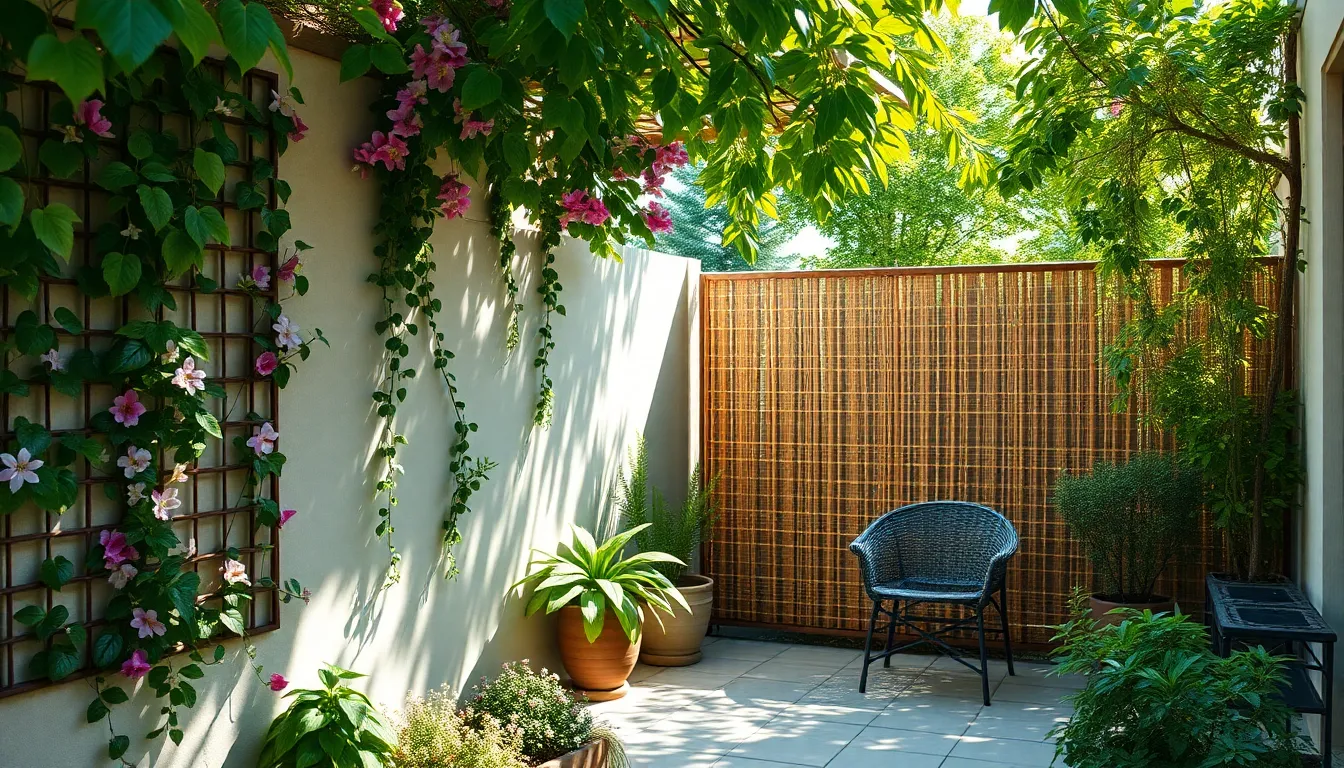
Trellises revolutionize garden shelter by maximizing vertical space while creating natural barriers against wind and prying eyes. We can transform these climbing plant supports into sophisticated protection systems that enhance both privacy and aesthetic appeal.
Wall-Mounted Trellis Systems
Wall-mounted trellis systems attach directly to exterior walls and fences to create instant vertical garden shelter. These structures support climbing plants like clematis, jasmine, and honeysuckle that form dense green screens within a single growing season. We recommend installing cedar or powder-coated metal trellises that withstand weather exposure while complementing your home’s architecture.
Professional installation typically costs between $150-$400 per 8-foot section depending on materials and complexity. Vinyl-coated wire mesh panels offer budget-friendly alternatives starting at $25 per section while providing excellent plant support. Strategic placement near patios and seating areas creates intimate outdoor rooms protected from neighboring views.
Maintenance involves annual pruning and occasional hardware inspection to ensure secure mounting. We suggest choosing expandable trellis designs that accommodate plant growth over time without requiring replacement.
Freestanding Privacy Screens
Freestanding privacy screens provide flexible garden shelter that moves with changing outdoor needs throughout seasons. These portable structures create instant privacy barriers around dining areas, hot tubs, or meditation spaces without permanent installation requirements. Modern options include weather-resistant bamboo panels, decorative metal screens, and modular wooden sections.
Heights range from 4 to 8 feet with widths spanning 6 to 12 feet per panel section. Quality freestanding screens feature weighted bases or ground anchors that maintain stability during windy conditions. We recommend investing in powder-coated aluminum frames that resist rust while supporting heavier climbing plants.
Costs vary from $100 for basic bamboo screens to $800 for premium metal designs with integrated planters. Strategic positioning creates multiple shelter zones that adapt to different weather patterns and entertainment needs throughout the year.
Living Walls with Integrated Shelter
Living walls combine vertical gardens with overhead shelter elements to create comprehensive outdoor protection systems. These green wall structures integrate with pergolas, gazebos, and awning systems to form weather-resistant outdoor rooms. We achieve optimal results by selecting drought-tolerant plants like succulents, ferns, and native species that thrive in vertical growing conditions.
Professional living wall installations range from $20-$50 per square foot including irrigation systems and plant materials. Modular pocket planters and hydroponic systems simplify maintenance while ensuring consistent plant health. Strategic integration with existing shelter structures maximizes coverage while creating stunning visual focal points.
Automated irrigation systems reduce maintenance requirements to monthly plant trimming and seasonal fertilization. We recommend consulting industry professionals for complex installations involving structural modifications or electrical components for lighting and water features.
Shade Sail Solutions: Installing Modern Fabric Coverage
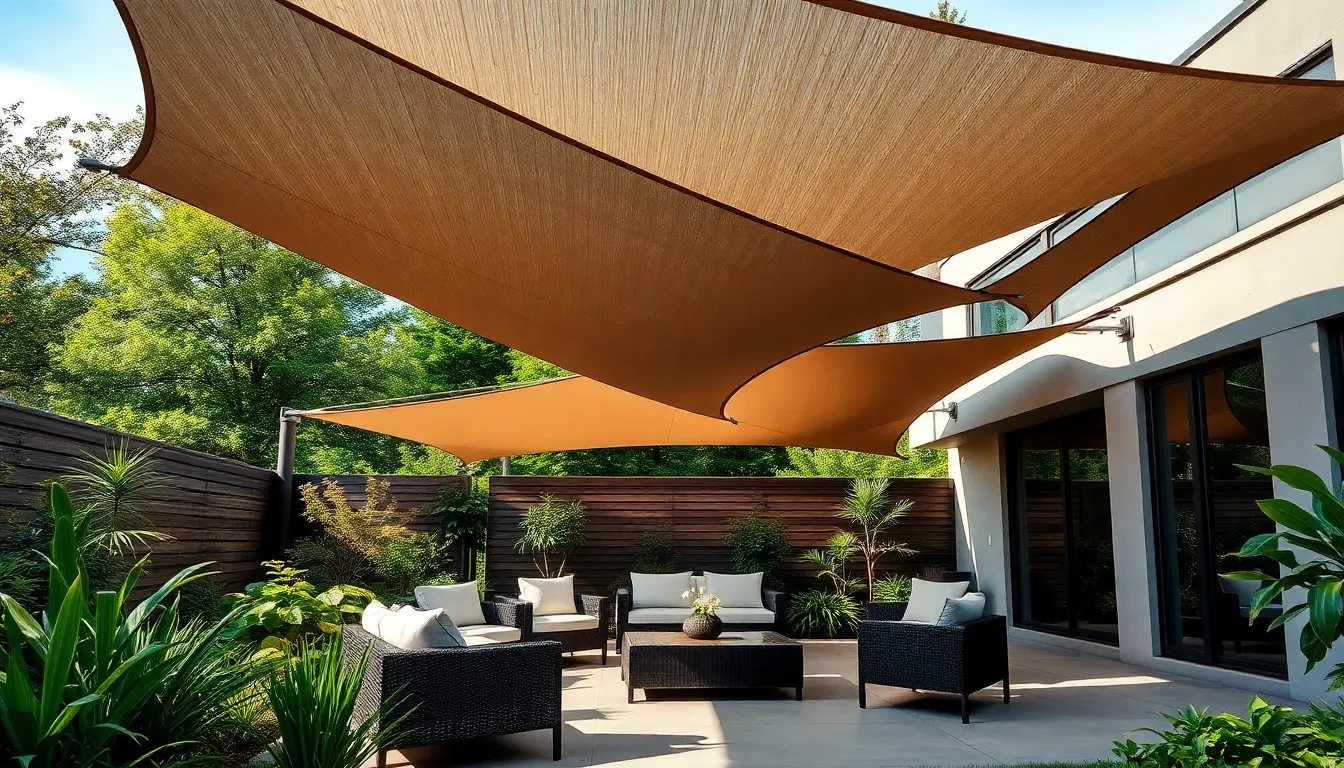
Shade sails bring a modern nautical elegance to any garden while delivering exceptional sun protection and UV resistance. We’ll explore the versatile configurations and practical considerations that make these fabric shelters an increasingly popular choice for contemporary outdoor spaces.
Triangle and Square Sail Configurations
Triangular sails create visually striking focal points that work exceptionally well in corner installations or against existing walls. These compact configurations provide targeted coverage for intimate seating areas or exact garden zones without overwhelming smaller spaces.
Square sails offer substantially more coverage area, making them ideal for larger patios or entertaining spaces where maximum shade is essential. We can combine multiple square sails to create expansive protected zones that accommodate dining sets or outdoor furniture arrangements.
Custom design combinations allow us to mix triangular and square shapes strategically throughout the garden space. This approach creates ever-changing visual interest while addressing varying sun exposure patterns and functional requirements across different areas.
Retractable Shade Sail Systems
Motorized retractable systems provide ultimate flexibility by allowing us to adjust coverage based on changing weather conditions or sunlight patterns throughout the day. These advanced installations respond to our exact needs whether we’re seeking full protection or open sky views.
Manual retraction options offer a more budget-friendly approach while still delivering seasonal versatility for areas with dramatic weather variations. We can easily deploy or store these systems as conditions change or during harsh weather periods.
Weather response capabilities protect both the fabric and our investment by automatically retracting during high winds or storms. Smart sensors detect potentially damaging conditions and secure the sail before damage occurs.
Weather-Resistant Fabric Selection
UV-resistant materials form the foundation of durable shade sail installations, with high-quality fabrics providing years of reliable sun protection without important fading or degradation. We prioritize fabrics that maintain their protective properties and appearance over extended outdoor exposure.
Water-resistant treatments ensure our shade sails perform effectively during light rain while allowing proper drainage to prevent pooling or structural stress. These treatments extend fabric life and maintain the sail’s shape integrity.
Hypar shape designs maintain proper tension and minimize wind-induced flapping that can compromise both performance and longevity. This engineering approach reduces stress points and ensures our shade sail installation remains stable and effective across varying weather conditions.
Greenhouse Getaway: Creating Year-Round Protected Spaces
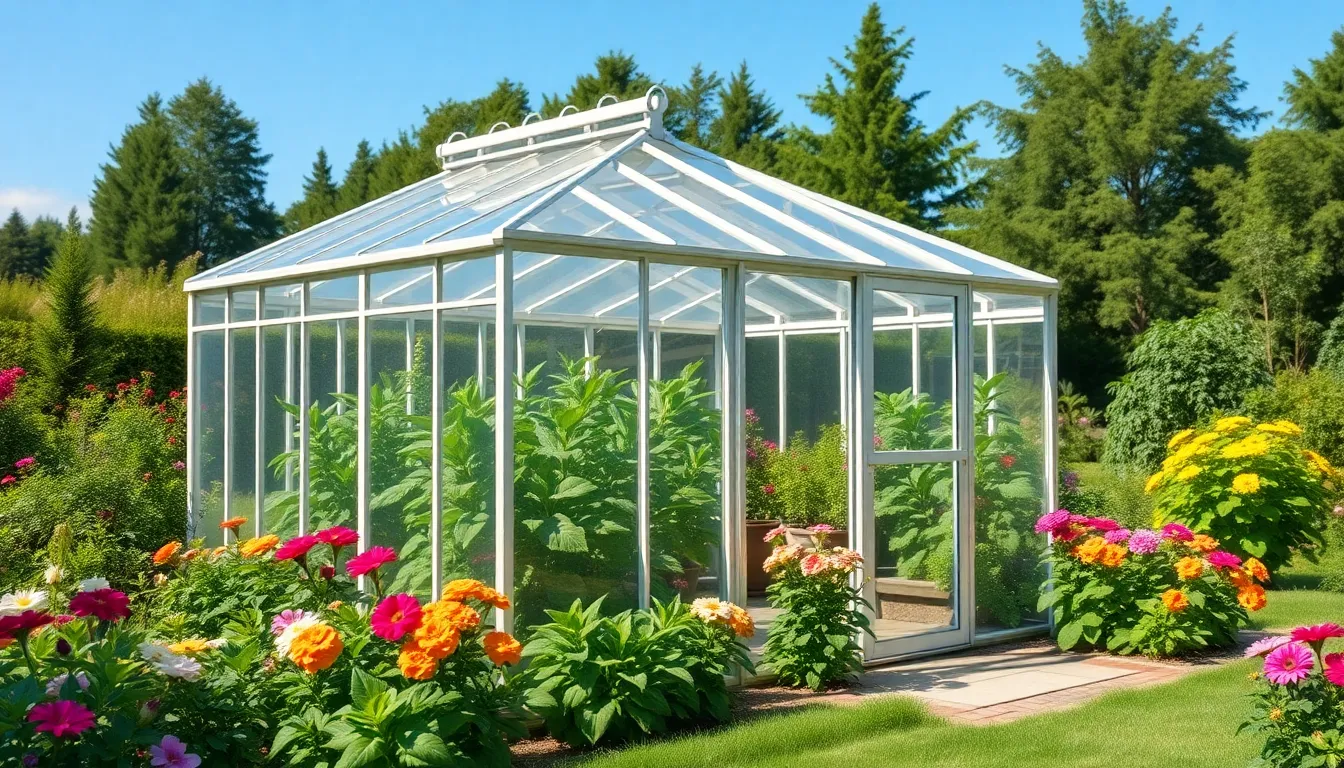
Building dedicated growing spaces transforms our gardens into productive sanctuaries that extend well beyond traditional growing seasons. These structures create controlled environments where we can nurture plants regardless of external weather conditions.
Small Hobby Greenhouse Options
Compact polycarbonate greenhouses offer excellent heat retention and durability for small backyard spaces. We can choose from various frame materials including rustic wood designs that blend naturally with garden aesthetics or sleek aluminum structures that provide modern functionality. Sizes range from portable 4×6 foot models to more substantial 8×12 foot structures that accommodate serious growing operations.
Polyethylene film greenhouses provide budget friendly alternatives while delivering effective plant protection. These lightweight options work particularly well for seasonal use and can be easily relocated as our garden needs change. Tempered glass greenhouses represent the premium choice with superior light transmission and long term durability that justifies the higher initial investment.
DIY greenhouse kits like the GeoDome design offer unique architectural appeal with lightweight yet secure construction. These plans provide ample growing space while creating striking focal points in our garden landscapes. Some innovative designs even incorporate sleeping lofts that transform our greenhouses into versatile garden retreats for multiple uses beyond plant cultivation.
Cold Frame Construction
Basic cold frame structures extend our growing seasons without requiring heating systems or electrical connections. We build these simple boxes using reclaimed wood frames topped with transparent covers that trap solar heat during the day and release it slowly at night. Proper sizing typically ranges from 3×3 feet for herb gardens to 4×8 feet for larger vegetable production.
Ventilation systems prevent overheating during warm days by automatically opening lids when temperatures rise above 75°F. We install simple hydraulic vent openers that require no electricity while protecting our plants from temperature extremes. Drainage holes in the bottom prevent waterlogging during heavy rains and ensure healthy root development.
Construction materials should prioritize durability and weather resistance for long term performance. Cedar and pressure treated lumber provide excellent rot resistance while recycled windows offer cost effective transparent covers. We position cold frames in south facing locations that receive maximum winter sunlight while providing some afternoon shade during summer months.
Hoop House and Tunnel Designs
Standard hoop houses create large enclosed growing spaces using curved frames covered with polyethylene film. We space PVC or galvanized steel hoops every 4 feet along the structure length and secure them with ground anchors or buried baseplates. These structures typically measure 6 to 12 feet wide and can extend to any length our garden space allows.
Tunnel greenhouse designs work exceptionally well for row crop production in smaller garden spaces. We construct these long narrow structures using bent conduit or specialized greenhouse hoops covered with polycarbonate panels or heavy duty plastic sheeting. Tunnel designs maximize growing space while maintaining easy access for planting and harvesting activities.
Low tunnel systems protect individual crop rows using wire hoops and lightweight row covers. These mini tunnels require minimal investment while providing frost protection and season extension for exact plantings. We can quickly install and remove these temporary structures as weather conditions and crop cycles demand throughout the growing season.
Natural Canopy Creation: Growing Living Shelter
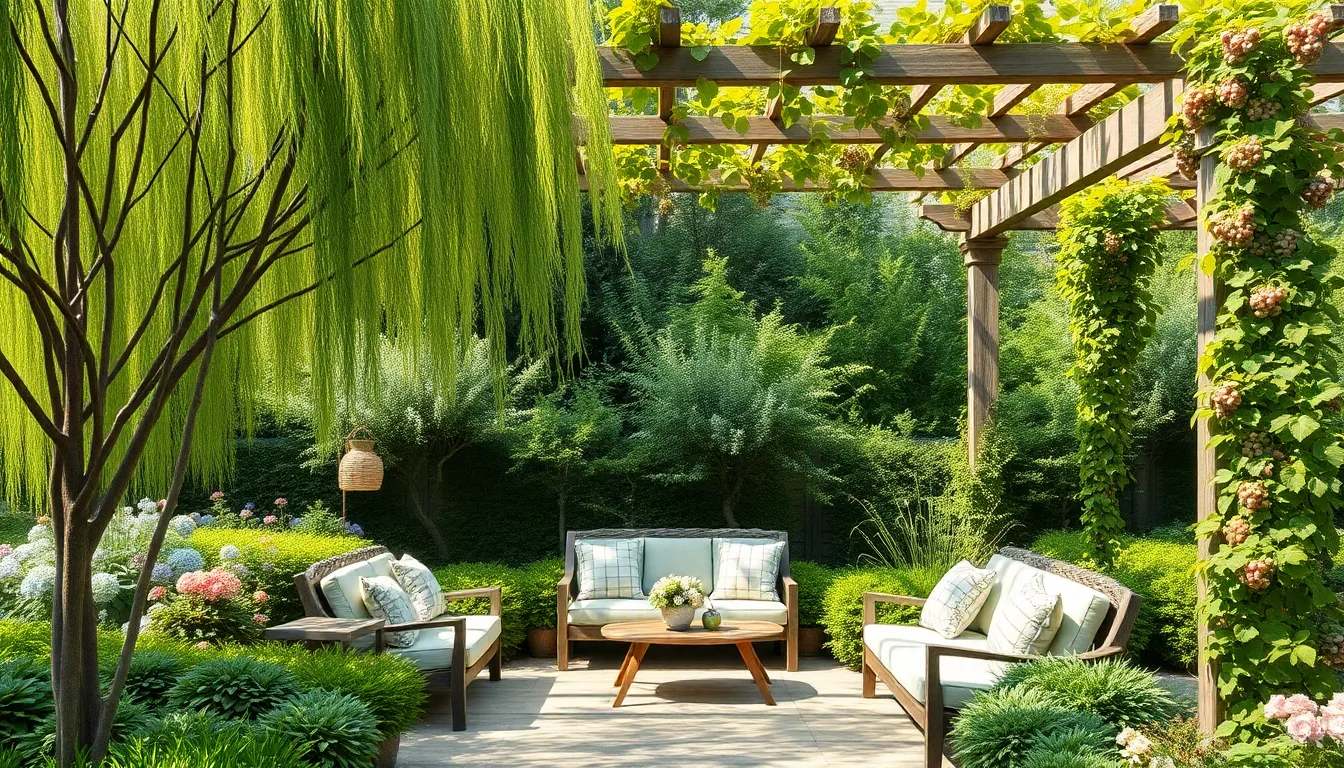
Living shelter transforms our gardens into naturally protected spaces while maintaining the beauty of organic growth. We can harness nature’s own architecture to create comfortable outdoor areas that evolve and improve over time.
Fast-Growing Shade Trees
Willow trees offer exceptional rapid growth rates that deliver substantial shade coverage within just a few seasons. We recommend planting weeping willows or pussy willows along garden borders where their expansive canopies can provide maximum coverage without overwhelming smaller plants below.
Poplar trees serve as excellent fast-growing alternatives that create effective overhead shelter within 2-3 years of planting. These hardy specimens thrive in various soil conditions and their tall, straight growth pattern makes them perfect for creating defined shaded zones throughout our garden spaces.
Silver maple trees establish quickly and develop broad canopies that filter sunlight beautifully while allowing gentle breezes to pass through their branches. We find these trees particularly valuable for creating natural cooling zones during hot summer months.
Strategic Shrub Placement
Windbreak configurations using dense shrubs like arborvitae or privet create protective barriers that shield delicate plants and seating areas from harsh prevailing winds. We position these living walls perpendicular to dominant wind patterns for maximum effectiveness.
Shade creation clusters formed by grouping medium-height shrubs like hydrangeas, rhododendrons, or viburnums establish intimate sheltered pockets throughout our garden industry. These strategic plantings work especially well around patios and walkways where we need filtered light rather than complete shade.
Privacy screening applications use evergreen shrubs such as boxwood or holly to create year-round shelter that blocks unwanted views while maintaining our garden’s natural aesthetic. We layer different shrub heights to create visual depth and enhanced protection.
Edible Plant Shelters and Food Forests
Fruit tree canopies combine practical food production with effective overhead shelter using apple, pear, or cherry trees that mature into substantial shade providers. We train these trees using espalier techniques against walls or fences to maximize both shelter and harvest potential.
Climbing edible plants like grape vines, hardy kiwis, or passionfruit transform pergolas and arbors into productive living shelters that provide both sustenance and protection. These vigorous climbers create dense overhead coverage while offering seasonal harvests.
Food forest systems integrate multiple plant layers including canopy trees, understory shrubs, and ground covers to create comprehensive sheltered ecosystems. We design these sustainable environments using permaculture principles that include nitrogen-fixing plants, berry bushes, and herb spirals that work together to create naturally protected growing spaces.
DIY Shelter Projects: Budget-Friendly Homemade Options
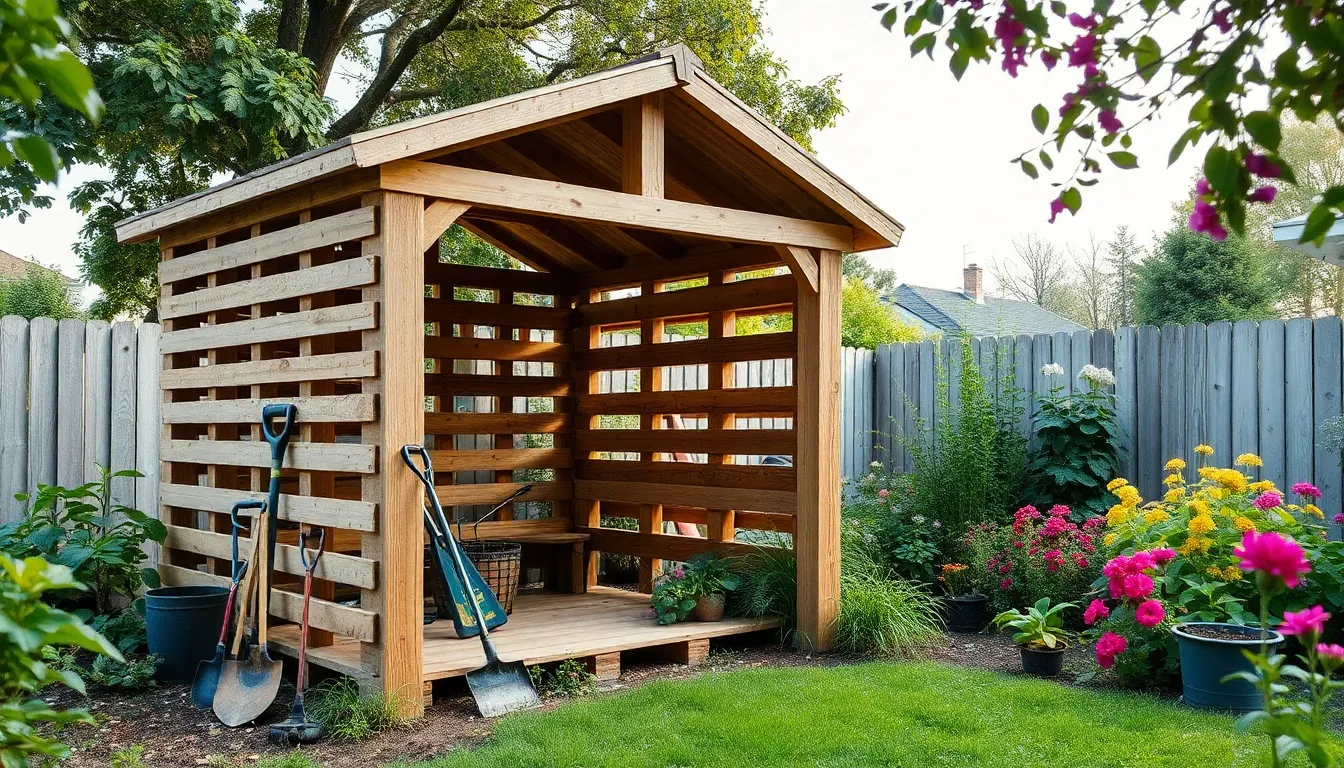
Building your own garden shelter doesn’t require professional construction skills or expensive materials. We can create effective outdoor protection using simple techniques and creative approaches that transform everyday items into functional garden structures.
Repurposed Material Structures
Wooden pallet shelters offer one of the most accessible DIY garden shelter answers we can build with minimal investment. We start by digging holes to bury support beams securely in the ground, then nail pallets to this basic frame structure for instant walls and partial roofing coverage. Each pallet measures approximately 48 inches by 40 inches, making them perfect building blocks for creating custom sized shelters that fit our exact garden spaces.
Reclaimed fence panels transform into excellent windbreaks and privacy screens when we mount them on sturdy posts driven deep into the soil. Old barn wood creates rustic shelter walls that blend naturally with garden landscapes while providing substantial protection from prevailing winds. We can salvage materials from construction sites, demolished buildings, or purchase inexpensive used lumber from salvage yards to keep costs under $50 for most basic shelter projects.
Corrugated metal sheets from agricultural suppliers create durable roofing answers when we attach them to simple wooden frames using weather resistant screws. These materials withstand harsh weather conditions for years while requiring minimal maintenance beyond occasional cleaning and rust prevention treatments.
Simple Lean-To Designs
Basic lean-to sheds against existing fences or walls provide instant shelter using minimal materials and construction time. We can build these structures with just a few 2×4 lumber pieces, some plywood or metal roofing, and basic hardware store brackets that cost less than $75 for a 6-foot by 8-foot shelter.
Slanted roof frameworks require only three walls since we attach the high side directly to an existing structure like a garage, shed, or privacy fence. This design cuts our material costs in half while creating effective rain protection and wind barriers for garden seating areas or tool storage.
Angled support posts driven into concrete footings create stable foundations that handle wind loads and snow weight without requiring complex engineering calculations. We space these posts 6 to 8 feet apart for optimal structural integrity while maintaining open access underneath the shelter.
Temporary Seasonal Shelters
Pop-up gazebos provide instant garden shelter answers that we can set up in minutes and store away during harsh winter months. These portable structures typically cost between $100 and $300 depending on size and quality, offering 10-foot by 10-foot coverage areas perfect for outdoor dining or entertaining spaces.
Canvas tarps stretched between trees or poles create effective temporary shade structures during summer garden parties or extended outdoor work sessions. We secure these covers using bungee cords, rope, and metal grommets to create adjustable shelter configurations that adapt to changing sun angles throughout the day.
Seasonal tent structures designed for camping work excellently as temporary garden shelters during spring planting seasons or fall harvest activities. These weatherproof covers protect both gardeners and plants from unexpected rain showers while providing comfortable workspace areas that we can relocate as needed throughout our garden layouts.
Multi-Purpose Shelter Designs: Combining Function and Beauty
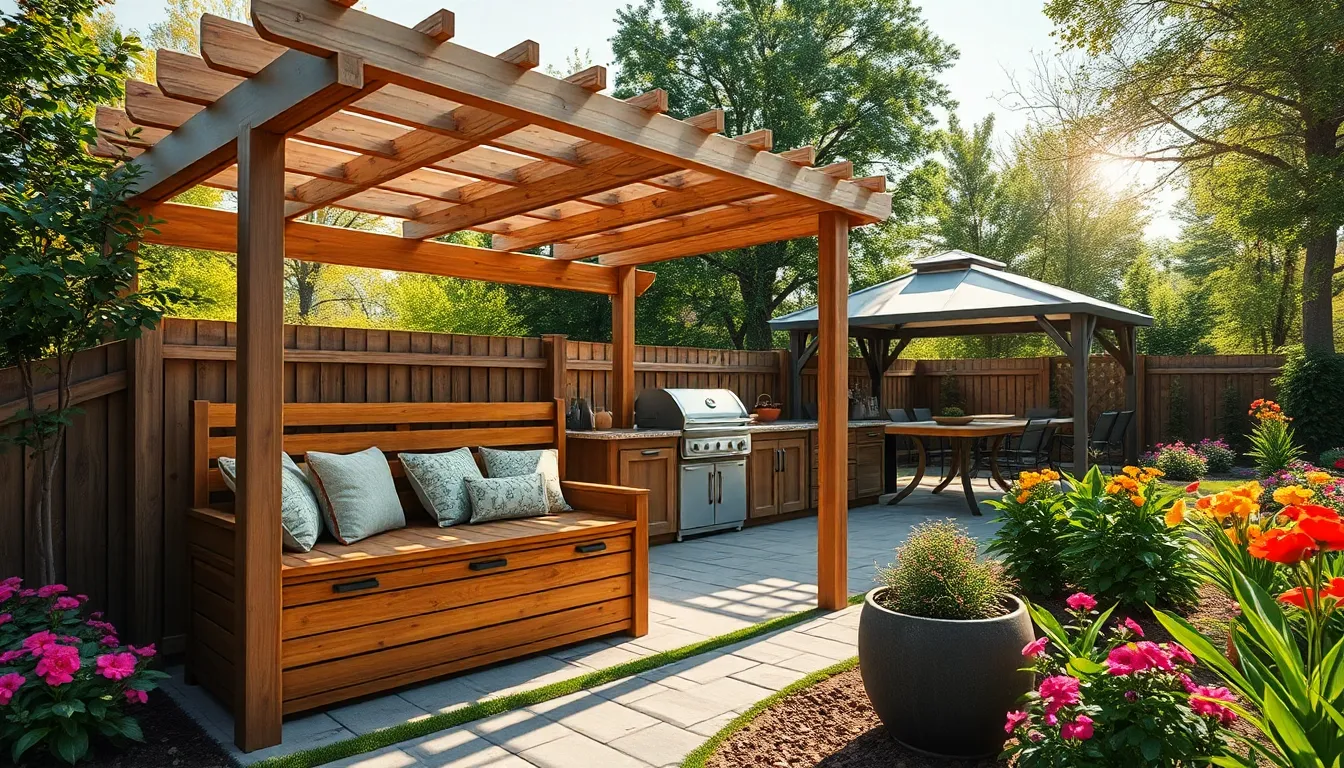
Smart shelter designs serve multiple functions while improving your garden’s aesthetic appeal. Combining practical needs with visual elements creates outdoor spaces that work harder for your lifestyle.
Storage and Shelter Combinations
Garden sheds transform from simple storage units into functional outdoor rooms when designed with shelter in mind. We recommend positioning larger sheds to provide windbreak protection for nearby seating areas while maintaining easy access to garden tools and equipment. Cedar and treated lumber options offer durability while blending naturally with industry designs.
Outdoor storage benches maximize space efficiency by combining seating with weather protection underneath pergolas or arbors. These versatile pieces store cushions, garden supplies, and outdoor games while providing comfortable spots to rest. Waterproof storage compartments keep items dry even during unexpected weather changes.
Combination structures integrate tool storage directly into gazebo or pergola designs through built-in cabinets and shelving systems. Custom designs can include potting benches, hose storage, and even small refrigeration units for entertaining purposes. These integrated answers eliminate the need for separate storage buildings while maintaining clean sight lines across your garden space.
Outdoor Kitchen Integration
Grill gazebos protect cooking areas from rain and harsh sun while creating comfortable spaces for food preparation and entertaining. Building a gazebo over outdoor kitchens transforms basic grilling setups into weather resistant cooking stations that extend the outdoor season. Proper ventilation systems and heat resistant materials ensure safety while maintaining functionality.
Sheltered outdoor dining areas benefit from awnings or pergolas that make eating spaces usable regardless of weather conditions. Retractable canopies offer flexibility to enjoy open air dining when conditions are perfect while providing instant protection when needed. Strategic placement near kitchen areas creates seamless indoor outdoor entertaining flow.
Covered prep stations combine counter space with overhead protection for efficient outdoor cooking workflows. Built-in storage keeps utensils, seasonings, and serving pieces within easy reach while protecting them from the elements. Weather resistant countertops and cabinetry withstand moisture while maintaining attractive appearances throughout seasons.
Play Area Protection
Fabric canopies tied between trees or structures provide instant shade and protection for children’s play areas without permanent installation requirements. Canvas and polyester options resist fading while offering UV protection during peak sun hours. Quick setup and takedown capabilities allow for flexible placement based on seasonal sun patterns and activity needs.
Permanent shelters like gazebos or pergolas designed specifically for play areas create safe spaces where children can enjoy outdoor activities regardless of weather conditions. Soft ground coverings underneath protect against falls while maintaining drainage for wet weather use. Built-in seating allows parents to supervise comfortably while children play.
Covered sandboxes and play equipment benefit from overhead protection that extends usable time and protects toys from rain damage. Simple roof structures keep sand dry and prevent equipment deterioration while allowing natural airflow. Strategic windbreak placement creates comfortable microclimates that encourage outdoor play even during breezy conditions.
Conclusion
We’ve explored an incredible range of garden shelter options that’ll transform your outdoor space into a year-round sanctuary. From elegant pergolas and gazebos to innovative shade sails and living canopies each solution offers unique benefits for different needs and budgets.
Whether you’re drawn to DIY projects using repurposed materials or prefer investing in premium structures like glass gazebos and motorized shade systems there’s a perfect shelter waiting for your garden. The key is choosing options that match your climate lifestyle and aesthetic preferences.
Your outdoor space deserves protection that’s both functional and beautiful. With these shelter ideas you can create comfortable areas that extend your living space while adding important value to your property. Start with one project and watch as your garden becomes the ultimate outdoor retreat.
Frequently Asked Questions
What are smart garden shelter solutions?
Smart garden shelter solutions are weather-resistant outdoor structures designed to protect your garden space from unpredictable weather while enhancing your outdoor living experience. These include pergolas, gazebos, arbors, shade sails, greenhouses, and DIY canopies that transform outdoor areas into year-round retreats suitable for different budgets and garden sizes.
How do I choose between a pergola and a gazebo?
Pergolas offer open-air freedom with partial coverage, perfect for climbing plants and natural shade. Gazebos provide complete enclosed shelter with superior weather protection. Choose pergolas for a balance of openness and coverage, or gazebos for maximum protection and elegant outdoor sanctuary spaces.
Can I build garden shelters on a budget?
Yes! Budget-friendly options include DIY projects using repurposed materials like wooden pallets and reclaimed fence panels. Simple lean-to designs, temporary seasonal shelters with canvas tarps, and pop-up gazebos offer effective protection without significant investment while maintaining functionality.
What materials work best for outdoor shelters?
Wood (cedar, treated lumber) offers natural beauty but requires maintenance. Metal (aluminum, steel) provides durability with minimal upkeep. Vinyl resists weather damage. For fabric solutions, choose UV-resistant, weather-resistant materials for shade sails and temporary structures.
How can I create natural shade in my garden?
Plant fast-growing shade trees like willows, poplars, and silver maples for substantial coverage. Use climbing plants on pergolas and arbors, create living walls with trellises, and integrate edible vines. Strategic shrub placement provides windbreaks and privacy screening naturally.
What’s the difference between shade sails and traditional canopies?
Shade sails are modern fabric structures offering exceptional UV protection with sleek, contemporary aesthetics. They’re available in triangular and square configurations, including retractable systems. Traditional canopies typically use heavier materials and provide more structured, permanent coverage options.
Do I need a greenhouse for year-round gardening?
Greenhouses extend growing seasons significantly but aren’t always necessary. Cold frames and hoop houses offer protection without heating systems. Small hobby greenhouses work well for serious gardeners, while simple structures can protect plants during harsh weather conditions effectively.
How do I maintain wooden outdoor structures?
Regular cleaning, annual staining or sealing, and prompt repair of damage are essential. Inspect for rot, insect damage, and loose connections. Apply weather-resistant finishes, ensure proper drainage around foundations, and trim climbing plants to prevent structural damage from overgrowth.
Can garden shelters serve multiple purposes?
Absolutely! Multi-purpose designs include garden sheds doubling as outdoor rooms, storage benches providing seating and weather protection, and grill gazebos combining cooking areas with dining spaces. These maximize functionality while enhancing your outdoor living experience efficiently.
What permits do I need for garden structures?
Permit requirements vary by location and structure size. Generally, small temporary structures don’t require permits, while permanent installations like large gazebos or greenhouses might. Check local building codes and HOA regulations before beginning construction to ensure compliance.

